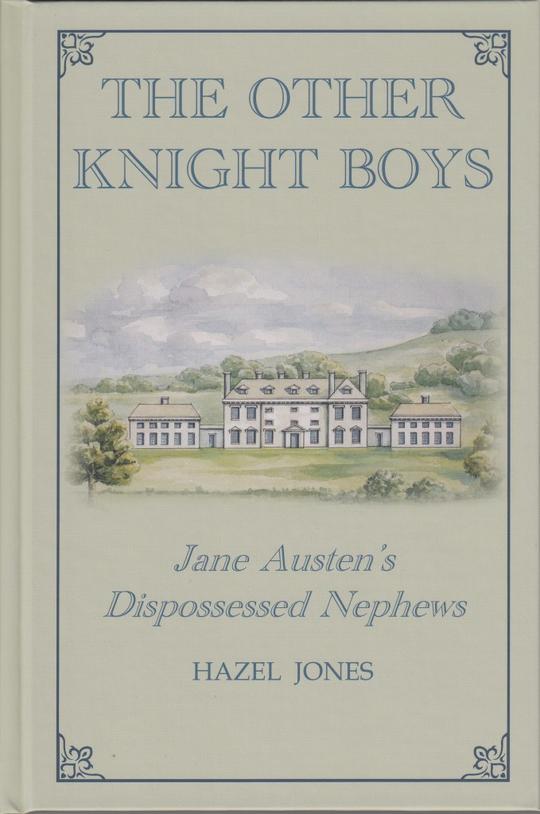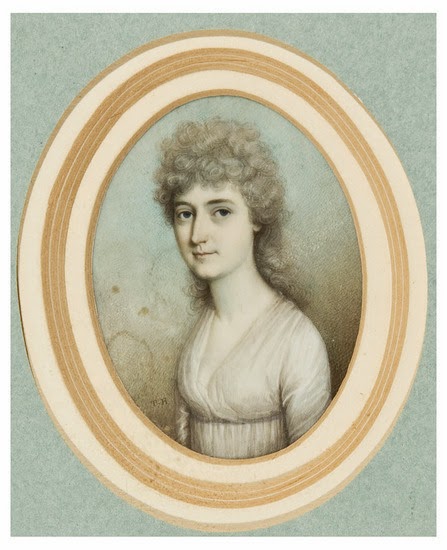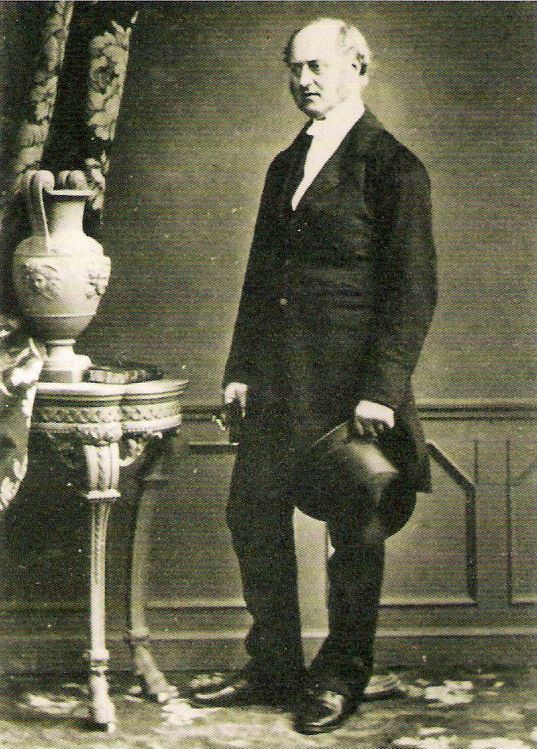Are you a maker of Lists? Do you keep a List of books to read, lists of books read, movies to watch, TV shows not to be missed, lists of gifts, grocery lists, house to-do lists, a master To-Do List? Do you have a List of Lists? Or, as one friend asked me years ago, do you ever add something to your To-Do list already done so you can cross it off? (I said absolutely NO!). But I do love lists – they organize a life, give a sense of control (false though that may be), especially in these troubled times. And so I find that instead of writing a more traditional book review of The Jane Austen Society, that I’d make a List, a very important list of at-least TEN reasons you should read this book – one reason alone is enough; ten means you should buy it immediately and jump right into its world.
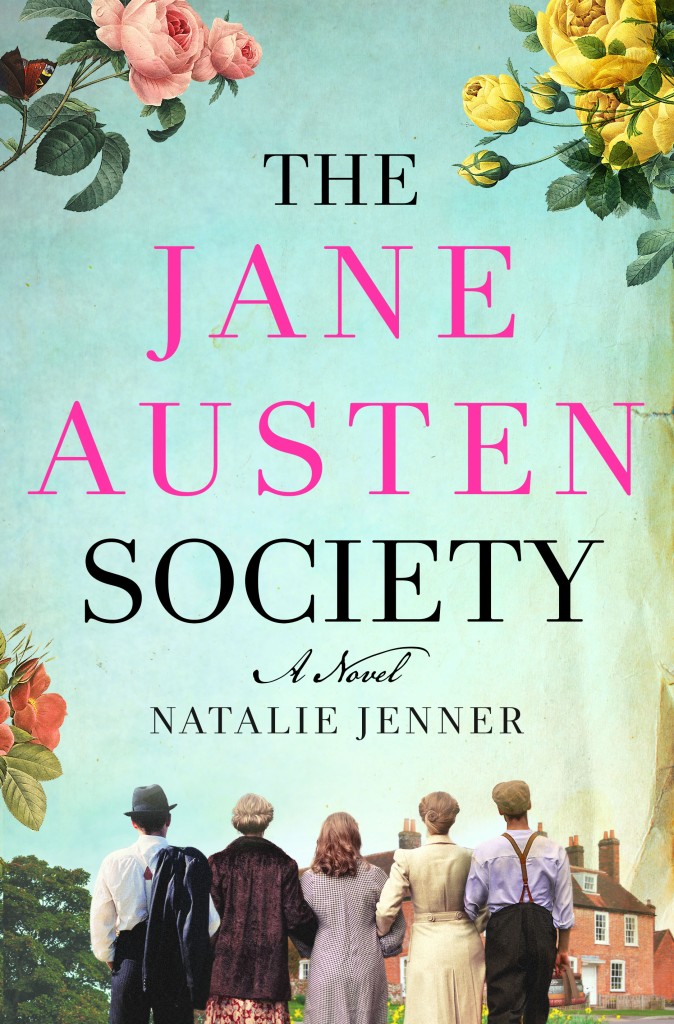
1. The Characters: Real and True
The author Natalie Jenner has said she had no outline for this tale, envisioned about eight characters, half male and half female, and essentially let them run amok.* We can only be glad she did! As one of her more Willoughby-like characters says of this rag-tag motley crew of folk all bent on forming a Jane Austen society: they were “a band of misfits with negligible expertise and no head for business: a country doctor, an old maid, a schoolmarm, a bachelor farmer, a fey auctioneer, a conflict-averse solicitor, a scullery maid, and one Hollywood movie star.” [276] – a “band of misfits” indeed. They are all from different backgrounds and histories, all part of the small rural community of Chawton, all with tragedy, pain and grief permeating and controlling their lives. Yet each is fully-drawn – you like, even love, these people.
2. The Plot: So Inventive
This is fiction (more on this below) – and not even historical fiction – it has nothing to do with the Real Jane Austen Society formed in the 1940s, same as our fictional group – so don’t confuse them. Let this story tell itself, as it brilliantly does: how this unlikely cast of characters discover a commonality in Jane Austen of all people, and strive to honor her in some way – they do live in Chawton after all… And in so doing, each finds Hope and Love and Self-Knowledge. And as the tale of each unfolds and their lives become inexorably intertwined, we have mysteries and secrets, stories of war and deaths, disagreements among neighbors, gossipy goings-on, and Love and Romance. What is there not to like? Jane Austen has given them a purpose, a sense of hope and a road map into an understanding of the heart. You find fast friends over Jane Austen, as many of us have found in our own lives.
3. The Setting: Chawton, of course
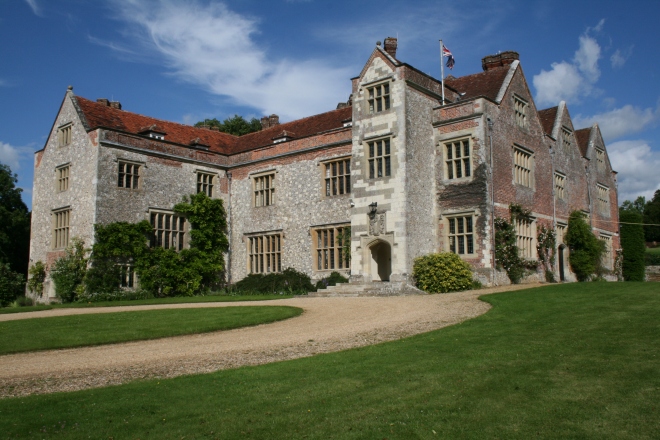
Not everyone living in this fictional Chawton reads or even likes Jane Austen. Some resent the weird travelers looking for sites associated with her. Even the family heir confesses a preference for the Brontës (especially Villette – pay attention here). But the setting is one we all are very familiar with, if we know a bit about Austen’s life after 1809. Living in Chawton Cottage (now Jane Austen’s House ) and trekking to her brother Edward’s Great House (now Chawton House), Jane Austen walked these walks, sat in these chairs, read in this library, all so beautifully and authentically described by Jenner. You are in this world in the 1940s, right along with the characters.
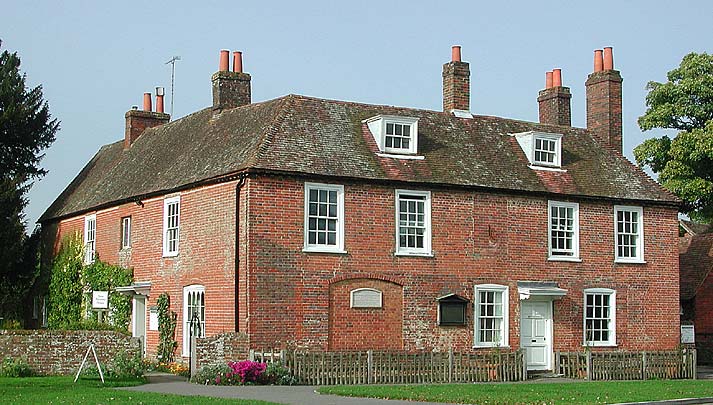
4. The Library [not as “In the Library with Colonel Mustard and the lead pipe”…but a Real Library]
One of my favorite parts of the book (the librarian-bookseller in me). Jenner confesses to a wee mistake about the location of the library at Chawton, but literary license allows just about anything, so she is heartily forgiven. Because she gives us Evie, the aforementioned scullery maid, who at 16 (and without giving too much away) has been secretly cataloguing the entire library in the Great House for the past two years and therefore is more knowledgeable about what’s there, what it’s all worth (and with the added bit of a FOUND letter by Austen, of which I shall say no more…), than anyone else in the family (who have ignored the library for generations) or anyone else in town. Evie is a delightful character – we would like to recruit her for our Reading with Austen / Godmersham Lost Sheep Society project!**
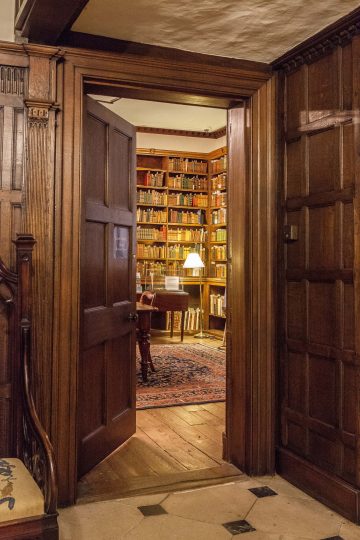
5. Jane Austen in Plain Sight:
One of the pure joys of this book is the light-hearted yet insightful analysis of Austen and her novels: characters actively discussing all the works in their general conversation with each other. Farmer Adam, on first reading Pride and Prejudice considers that “he was becoming quite worried about Mr. Darcy.” [10] The town doctor and the local schoolteacher have a lively chat about Emma: the teacher dislikes Emma, the doctor adores her – they wrangle over Mr. Knightley’s true feelings as Austen drops her clues. [I was delighted to find a new-to-me hint to add to my ever-growing List of Clues that Mr. Knightley is very much in Love.]
Then there are the almost direct correlations between characters – you’ll certainly find a Willoughby or Henry Crawford or a William Elliot in these pages, several of Austen’s couples, maybe even a Mr. Rushworth and a Mrs. Elton – there’s even a Dog! – the fun is finding them and going “aah…” Here’s a standout: one of the characters says “within the pages of Mansfield Park was the playbook for making a good woman fall for a cad.” [151] How true that is – and I never looked at Crawford’s behavior in such a light before…
And then the direct quotes in different contexts, which leads us to…
6. Jane Austen Is Not for “Dull Elves”:
The Austen discussion and character correlations are more straightforward than the many allusions scattered throughout, multiple readings likely needed to flesh them all out. Austen was a master of the allusion herself and again, it’s great fun to find these little crumbs:
“You have borne it as no other woman in England would have…” [295]
“I probably would’ve cut him a lock of my own hair if he’d asked for it.” [188]…
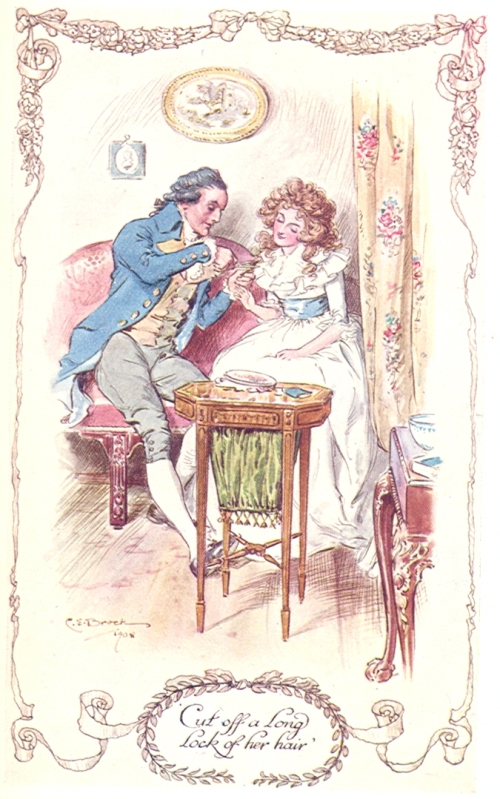
So many – don’t want to inhibit your “sharp-elves” detective skills, so that’s all I shall share…which leads us to another no-spoilers here item on our list…
7. The Mystery(ies) wherein lies a will and an heir just like an Austen plot…
….and shall just say there are secrets and mysteries in abundance. So much under the surface, so much history Jenner gradually allows the reader to see, like the proverbial peeling away of an onion – layers of stories to reveal truths… and again, not unlike Austen, Jenner feeds us more and more of each character and their motivations, and we care largely because of ….
8. The Romance: There’s A Lot of It!
So we have eight major characters, and a house full of minors (some of whom, like in Austen, have a lot to say, and a lot to do to move the plot along). Part of the fun (and mystery) is who will end up with whom? Even one of the characters falls asleep one night musing on and making mental lists of possible couplings. Evie at 16 is perhaps the most perceptive at seeing what the heck is going on. It’s all quite endearing – but no spoilers here (though can I say there is a Wentworth-like letter??)
9. It’s Fiction!
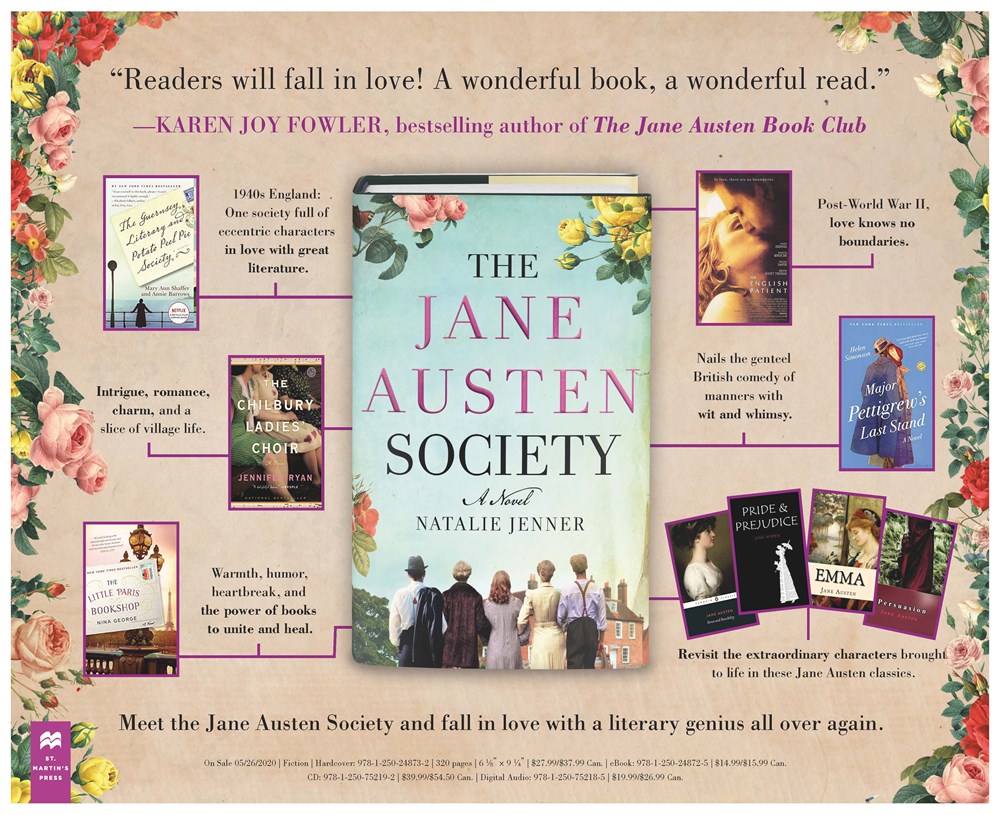
Ok, have to repeat this – this is pure fiction, not even great literature (though it is very well written), not based on the real Jane Austen Society as I’ve said (and that real story is compelling it is own right – you can read about it here.)
But even if you are not an avid reader of fiction, but you like Jane Austen, you will get much out of your few hours of time invested. And even if you don’t know squat about Jane Austen, you’ll love this book (you can also listen to it – spending several hours with Richard Armitage is top on my Must-Do list] – because of the humor, the grace, and the romance, and because…
10. We Need This Right Now:
This is a Feel Good book – and goodness, we need that right now more than anything – pick it up and wander back into a simpler (though in so many ways harder) time, to a place ravaged by war, when loss and grief were the bywords of the day, and live for a bit with this delightful “band of misfits” as they each find their way to a better future, all with thanks to Jane Austen, a lesson for us all, especially now…
****************
* You can hear Natalie Jenner’s May 15, 2020 talk for the Chawton House Literary Festival on Youtube here:
Also read her interview with Rachel Dodge at the Jane Austen’s Regency World blog here.
** For a real-life cataloguing project concerning Edward Austen Knight’s libraries at his Godmersham and Chawton estates, please visit the Reading with Austen website and the Reading with Austen blog. Under the direction of Professor Peter Sabor, the hope is to locate (and return if possible) as many of the books that were originally in the Knight library during Jane Austen’s time. We need Evie on this project!
************
About the author:

Natalie Jenner is the debut author of THE JANE AUSTEN SOCIETY, a fictional telling of the start of the society in the 1940s in the village of Chawton, where Austen wrote or revised her major works. Born in England and raised in Canada, Natalie graduated from the University of Toronto with degrees in English Literature and Law and has worked for decades in the legal industry. She recently founded the independent bookstore Archetype Books in Oakville, Ontario, where she lives with her family and two rescue dogs.
WEBSITE | TWITTER | FACEBOOK | INSTAGRAM | GOODREADS
- Twitter handles: @NatalieMJenner, @StMartinsPress @MacmillanAudio
- Hashtags: #TheJaneAustenSociety #HistoricalFiction, #AudioBooks, #AmReading, #JaneAusten #RichardArmitage
*******************
About the Book:
Just after the Second World War, in the small English village of Chawton, an unusual but like-minded group of people band together to attempt something remarkable.
One hundred and fifty years ago, Chawton was the final home of Jane Austen, one of England’s finest novelists. Now it’s home to a few distant relatives and their diminishing estate. With the last bit of Austen’s legacy threatened, a group of disparate individuals come together to preserve both Jane Austen’s home and her legacy. These people—a laborer, a young widow, the local doctor, and a movie star, among others—could not be more different and yet they are united in their love for the works and words of Austen. As each of them endures their own quiet struggle with loss and trauma, some from the recent war, others from more distant tragedies, they rally together to create the Jane Austen Society.
Book details: Genre: Historical Fiction, Austenesque Fiction
The Jane Austen Society: A Novel, by Natalie Jenner
St. Martin’s Press (May 26, 2020)
Hardcover ISBN: 978-1250248732
eBook ASIN: B07WQPPXFW
Audiobook ASIN: B082VL7VRR
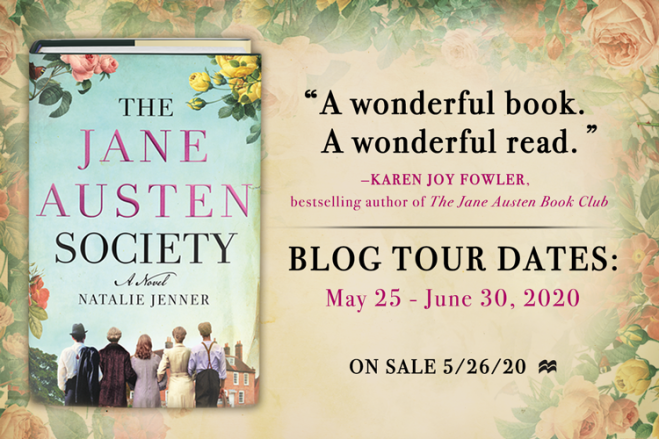
Blog Tour Dates: May 25 – June 30, 2020 – you can read more about the blog tour and the schedule here and here at Austenprose.
You can buy the book at all the usual suspects – but start with your local bookstore!
Indiebound / Amazon / Barnes and Noble / Book Depository / BookBub / Audible
©2020 Jane Austen in Vermont



